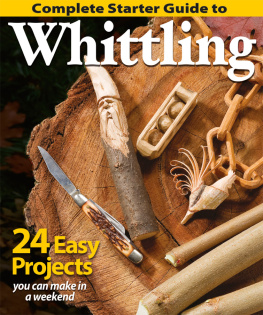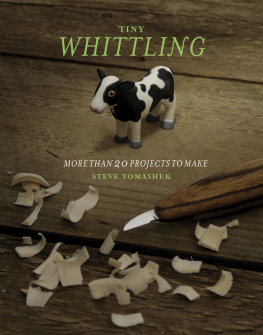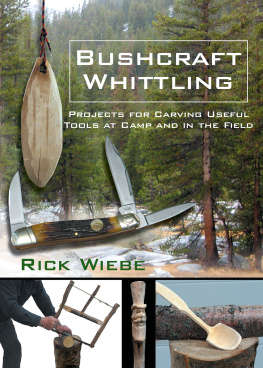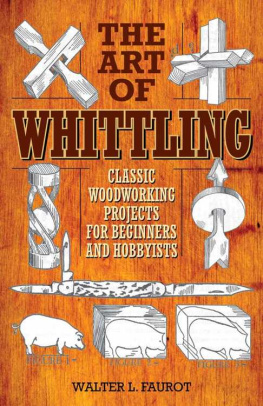Whittling
The Beginners Guide To Wonderful Art of Whittling And Wood Carving Kitchen Keepsakes & More!
1st Edition
By Jimmy Neal
Copyright 2018 by Jimmy Neal. All rights reserved.
This document is geared towards providing exact and reliable information in regards to the topic and issue covered. The publication is sold with the idea that the publisher is not required to render accounting, officially permitted, or otherwise, qualified services. If advice is necessary, legal or professional, a practiced individual in the profession should be ordered.
- From a Declaration of Principles which was accepted and approved equally by a Committee of the American Bar Association and a Committee of Publishers and Associations.
In no way is it legal to reproduce, duplicate, or transmit any part of this document in either electronic means or in printed format. Recording of this publication is strictly prohibited and any storage of this document is not allowed unless with written permission from the publisher. All rights reserved.
The information provided herein is stated to be truthful and consistent, in that any liability, in terms of inattention or otherwise, by any usage or abuse of any policies, processes, or directions contained within is the solitary and utter responsibility of the recipient reader. Under no circumstances will any legal responsibility or blame be held against the publisher for any reparation, damages, or monetary loss due to the information herein, either directly or indirectly.
Respective authors own all copyrights not held by the publisher.
The information herein is offered for informational purposes solely, and is universal as so. The presentation of the information is without contract or any type of guarantee assurance.
Table of Contents
Introduction

The art of whittling can be considered a national tradition that has been passed down from father to son (or father to daughter). This has been going on for generations and it is one of the skills that you can pass on to the next generation after reading this book.
Simply put, whittling is wood carving using only a knife. The actual tool being used, i.e. the whittling knife, is the main reason why it is called whittling in the first place.
The practice helps you learn and respect a sharp blade. It is by far one of the most relaxing and contemplative activities that you can do. Sometimes the act of whittling itself can be meditative and bring you back in touch with Mother Nature.
In this book we will go over the very fundamentals to help beginners learn the craft. You will learn what types of wood to use, the best knives to use for whittling, the five basic whittling cuts and strokes, knife handling and maintenance, whittling and free hand wood carving tips, and whittling projects from beginners to intermediate level whittlers.
Note that this is not an all comprehensive book. The goal here is to help newbies get a feel for the craft and maybe learn more about it and pick up whittling as a hobby.
I hope you enjoy the contents of this book as much as I have enjoyed writing it. May you find that rather tantric peace of mind as you try your hand at whittling.
Thank you very much.
Chapter 1 Whittling Wood
The first thing you need to get started whittling is a piece of wood. Now, a lot of whittling folks and outdoorsmen will tell you that the best wood for this kind of hobby is any kind of softwood. Theyre especially useful for beginners.
Softwoods are easy to cut and as the name suggests theyre soft theyre not rubbery or foam-like soft but compared to other woods theyre easier to slice. Meaning, theyre not soft per se well, lets call them a softer kind of wood that should help you understand things better.
The Wood You Pick Up on the Ground
Now, you use softwoods for starters but as you gain experience you should move on to harder and tougher kinds of wood. When youre out camping or walking around the park sometimes youll find a fallen branch or a piece of wood lying on the ground, you can pick it up and whittle it down to something really beautiful.
Sometimes the newly fallen branch or wood is easier to whittle. However, sometimes there are fresh branches or sticks that are tougher to work on. Just remember that when youre working with a stick or wood that you should peel off the bark first. You will need to rough cut it first down to size before you can begin the artistic side of whittling.
Wood Grain
Well be talking about wood grain several times and this is an important part of whittling or any other kind of woodworking for that matter. When we say grain of the wood or wood grain we are actually referring to the lines that you will see naturally on a piece of wood.
Those lines you see tell you which way the fibers go. If you cut along the direction of the fibers then it will be a lot easier for you to run a knife and cut into the wood. Go against it or not along its path then youll find that your cuts wont go in the way you expected it to.
Sometimes the wood grain will go in one direction only, like this:

As you can see here, the lines or the grain of the wood go from left to right. So, you want to cut along those lines and not vertically. If you go vertical then you will have the hardest time penetrating through those fibers.
It doesnt matter what sharp instrument you use whittling knife, samurai sword, or an axe, if you go against the grain expect it to be tougher work as opposed to cutting along the grain.
Now, sometimes the wood grain goes in all sorts of directions, like this:

Now, that is one tough piece of wood. If youre a beginner and you find a piece of wood that has this crazy kind of grain then it would be better for you to leave it alone and try some other wood.
You can keep it for later use you may want try your hand at it much later when you have gained a lot of whittling experience but that will still be a tough one to crack and even experienced whittlers and old timers will avoid that sort of wood.
TIP: it would be wise to avoid using woods that have lots of knots on them (i.e. grain that twists and turns and go in all sorts of directions). Stick to wood that has a generally straight grain.
Where to Get Your Wood

You can get your wood pretty much anywhere. You can create your whittlin g projects according to the shape of the wood that you can find. For instance, if you find an L-shaped branch that has fallen to the ground and if it is the right size and dimensions then you can whittle it down to a boot.
Some straight branches can be whittled to an arrow while small triangular and somewhat flat shaped pieces can be whittled into an arrow head. Cone shaped pieces can be made into Christmas trees.
Whatever you find that is given to you by Mother Nature you can use it as your material your only limit is your imagination. However, not all wood pieces are provided freely by nature itself.
Sometimes you will be limited by the stuff that you can find. So, what do you do when you cant find the right wood that has the right size and dimensions for your project? The answer is simple head on out to your favorite lumber yard.















